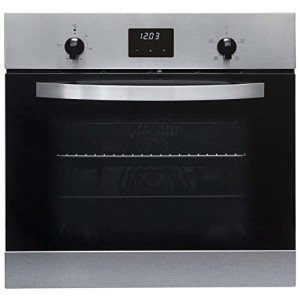What To Look For In The Hob And Oven Right For You

Understanding Hobs and Ovens: The Essential Kitchen Appliances
In the realm of kitchen home appliances, few products are as necessary as hobs and ovens. These devices form the backbone of culinary activities, allowing individuals to create everything from easy meals to elaborate banquets. Understanding the distinctions, types, and performances of hobs and ovens can considerably improve one's cooking experience. This article dives into the intricacies of hobs and ovens, supplying insights that cater to both amateur and experienced cooks.
What Is a Hob?
A hob, often referred to as a cooktop or stove top, is the flat surface area on which pots and pans are put for cooking. Hobs are geared up with heating elements that produce the required heat for cooking food. They can be found in various forms, consisting of gas, electric, induction, and ceramic options. Each type uses special benefits and drawbacks.
Kinds of Hobs
Gas Hobs:
- Heat Source: Natural gas or gas.
- Advantages: Instant heat control and responsiveness, chosen by lots of chefs for accurate cooking.
- Disadvantages: Requires a gas connection and can be less energy-efficient.
Electric Hobs:
- Heat Source: Electric coils or smooth glass-ceramic surfaces.
- Benefits: Generally simpler to clean, even heating, and extensively offered.
- Drawbacks: Slower to warm up and cool off compared to gas.
Induction Hobs:
- Heat Source: Electromagnetic currents.
- Advantages: Quick heating, energy-efficient, and only heats up the cookware, not the surrounding surface.
- Drawbacks: Requires suitable cookware (ferrous products).
Ceramic Hobs:
- Heat Source: Electric and has a smooth glass surface area.
- Benefits: Sleek appearance, easy to tidy, and even heating.
- Downsides: Can take longer to warm up and cool down.
What Is an Oven?
An oven is an enclosed home appliance that cooks food by surrounding it with dry heat. Ovens And Hobs can be standalone units or combined with hobs in a single device understood as a variety. Ovens are versatile tools that can be utilized for baking, roasting, broiling, and more.
Kinds of Ovens
Standard Ovens:
- Heat Source: Electric or gas.
- Advantages: Good for traditional baking and roasting.
- Drawbacks: Can have uneven heat circulation.
Convection Ovens:
- Heat Source: Electric or gas with a fan for flowing air.
- Advantages: More even cooking and faster cooking times due to airflow.
- Downsides: Can be pricier and might need adjustments in cooking times.
Microwave Ovens:
- Heat Source: Microwaves.
- Advantages: Quick cooking and reheating; excellent for thawing.
- Downsides: Can not brown or crisp food well.
Steam Ovens:
- Heat Source: Steam generation.
- Benefits: Retains nutrients and moisture in food, healthier cooking option.
- Downsides: Longer cooking times and normally higher cost.
Key Differences Between Hobs and Ovens
While hobs and ovens serve the primary function of cooking food, their functionalities and uses differ considerably. The following table sums up these essential distinctions:
| Feature | Hob | Oven |
|---|---|---|
| Cooking Method | Direct heat | Enclosed heat |
| Main Use | Boiling, sautéing, frying | Baking, roasting |
| Heat Source | Gas, electric, induction | Gas, electric, steam |
| Cooking Area | Flat surface | Enclosed space |
| Cooking Time | Normally much faster | Varies based upon meal |
| Control & & Precision | Immediate and direct | Count on settings and timers |
Advantages of Using Hobs and Ovens Together
Integrating using a hob and an oven can considerably improve the cooking process. Here are some benefits:
- Versatility: Different kinds of food can be prepared all at once.
- Efficiency: Using both permits for numerous cooking techniques, such as searing on the hob and baking in the oven.
- Time-Saving: Multi-tasking can substantially minimize total cooking time.
Upkeep and Care
To guarantee the longevity of hobs and ovens, routine maintenance is important. Here are some pointers:
For Hobs:
- Clean spills immediately to prevent staining.
- Usage appropriate cleaners for specific materials (e.g., ceramic cleaner for glass-ceramic hobs).
- Routinely check gas connections for leaks (for gas hobs).
For Ovens:
- Wipe down the interior after each use to avoid build-up.
- Use self-cleaning features if offered, or apply oven cleaners for hard spots.
- Routinely examine seals and gaskets for wear and tear (to keep heat efficiency).
FAQs About Hobs and Ovens
1. What is the best kind of hob for a newbie cook?
Answer: A ceramic or electric hob is typically recommended for beginners due to reduce of usage and cleansing.
2. Can I use any pots and pans on an induction hob?
Answer: No, induction hobs require pots and pans made from magnetic products (e.g., cast iron or stainless steel).
3. How typically should I clean my oven?
Response: It is recommended to clean your oven every few months, or more frequently if you use it typically.
4. Is it much better to bake in a convection oven?
Answer: Yes, convection ovens are frequently better for baking as they provide even heat circulation. However, some delicate recipes may gain from traditional ovens.
Comprehending the functionality and distinctions between hobs and ovens is important for any cooking lover. Whether one chooses the instantaneous heat of a gas hob or the accuracy of an induction cooktop, each type offers special benefits. Likewise, ovens differ extensively in function, from standard baking to steam cooking. By valuing these appliances' roles in cooking, cooks can improve their culinary abilities and improve their kitchen activities.

